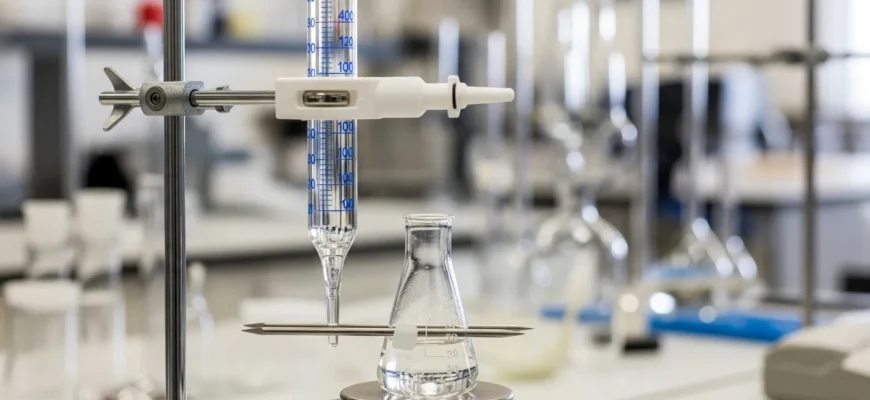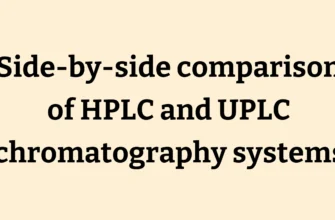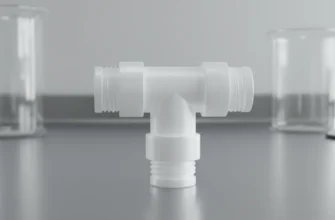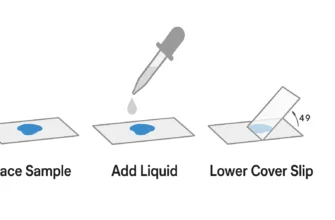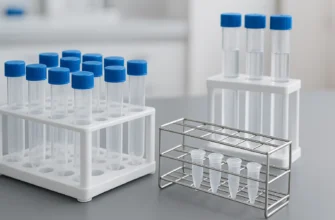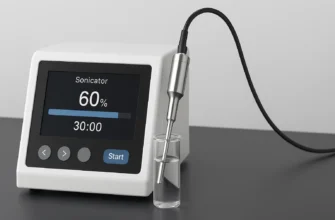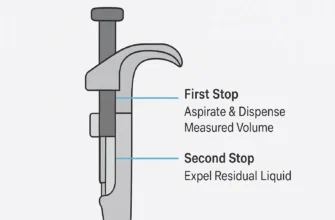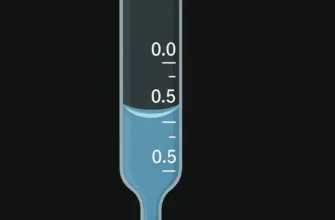Choosing a 50ml Burette: A Practical Guide to Types and Value
In analytical chemistry, precision is paramount. Every measurement contributes to the reliability of your results, and nowhere is this more critical than in titration work. The 50ml burette stands as the backbone of most volumetric analyses, offering the perfect balance between capacity and precision for standard laboratory procedures. Whether you’re conducting acid-base titrations, redox reactions, or complexometric analyses, choosing the right burette can dramatically impact both your workflow efficiency and measurement accuracy.
This guide cuts through the technical jargon and marketing claims to help you make an informed decision between traditional glass burettes and modern digital alternatives. The choice isn’t simply about old versus new—it’s about understanding which tool best serves your specific needs, budget, and quality requirements.
The Classic Choice: Glass Burettes
Borosilicate Glass: The Foundation of Reliability
Glass burettes have remained largely unchanged for decades because they work exceptionally well. The key lies in borosilicate glass construction, specifically Type 1, Class A borosilicate that contains approximately 81% silica and 13% boric oxide. This composition gives borosilicate glass superior thermal shock resistance, allowing it to withstand temperature changes of up to 180°C without cracking. More importantly for burette applications, borosilicate glass is chemically inert to most analytical reagents, ensuring your solutions remain uncontaminated.
Class A Precision: Understanding What You’re Paying For
The precision designation is where glass burettes separate into distinct categories. Class A burettes represent the highest precision grade, with a 50ml Class A burette having a tolerance of ±0.05ml according to DIN ISO 385 standards. This means that at any point on the scale, the actual delivered volume should not deviate by more than 0.05ml from the indicated volume.
Class B burettes, while more economical, have double the tolerance at ±0.10ml. For many routine applications, Class B precision is perfectly adequate, but for critical analytical work where accuracy directly impacts results, Class A is essential. The tolerance applies not just at the nominal capacity but at any two points on the scale—the maximum permissible difference between errors at any two scale points is also ±0.05ml for Class A.
Brand Quality: What the Names Mean
Pyrex (manufactured by Corning) remains the gold standard in laboratory glassware. Pyrex burettes are made from genuine borosilicate glass with permanently fused graduations that won’t fade or wear away. The precision-bore construction ensures uniform internal diameter throughout the length, providing consistent accuracy between any two measurement points.
Borosil, India’s largest manufacturer of laboratory glassware, offers competitive quality at more accessible price points. Borosil maintains strict quality control with visual and physical checks at each production stage, ensuring their burettes meet international standards while often costing significantly less than Pyrex equivalents.
Advantages of Glass Burettes:
-
Cost-effective: Basic 50ml Class A glass burettes range from $15-50, making them accessible for most budgets
-
Chemical versatility: Borosilicate glass is compatible with virtually all analytical reagents
-
No power requirements: Pure mechanical operation means no battery concerns or electronic failures
-
Familiar operation: Most technicians are already trained in glass burette techniques
-
Long service life: With proper care, a quality glass burette can serve for decades
Limitations to Consider:
-
Manual reading requirements: Susceptible to parallax errors and subjective meniscus interpretation
-
Physical fragility: Despite borosilicate strength, glass can still break with impact
-
Speed limitations: Drop-by-drop control requires patience and skill
-
Data recording: Results must be manually transcribed, introducing potential transcription errors
The Modern Alternative: Digital and Automatic Burettes
Digital Precision: The Titrette Revolution
Digital burettes represent a significant evolution in volumetric analysis, with the Brand Titrette leading this transformation. The Titrette bottle-top burette achieves Class A precision limits while eliminating most sources of human error inherent in glass burette operation. The digital display shows dispensed volume to 0.001ml resolution up to 20ml, then 0.01ml for the remainder of the range.
Key Features That Matter:
-
Automated dispensing: Precision gears allow both fast filling and drop-wise titration without switching between modes
-
Digital readouts: Clear LCD display eliminates parallax errors and meniscus reading uncertainties
-
Data recording: Values can be stored and transferred to computers via RS232 interface (optional)
-
SafetyPrime technology: Recirculating valve channels reagent back into the reservoir during priming, eliminating waste
-
Battery operation: Runs on standard AAA batteries with auto-shutoff to conserve power
The Titrette’s accuracy matches Class A glass burettes, with systematic errors well within ±0.05ml limits. More importantly, the precision is consistently reproducible since digital measurement eliminates operator variability in reading techniques.
Advanced Digital Features:
Modern digital burettes like the Witeg Titrex push capabilities even further, offering volume ranges up to 99.99ml with memory storage for up to 1000 measurements. These instruments can be recalibrated for different liquid viscosities and include features like 360° rotatable valve blocks for enhanced safety.
Advantages of Digital Burettes:
-
Elimination of reading errors: Digital display removes subjectivity from measurements
-
Increased speed: Automated dispensing significantly reduces titration time
-
Data integrity: Built-in storage and PC connectivity prevent transcription errors
-
Consistency: Operator-independent results improve reproducibility between technicians
-
Advanced features: Programmable dispensing, multiple calibrations, and statistical analysis capabilities
Considerations and Limitations:
-
Higher cost: Digital burettes range from $350-900, representing 10-20 times the cost of glass equivalents
-
Maintenance complexity: Electronic components require more sophisticated service than simple glass burettes
-
Power dependency: Battery failures can halt operations until replacement
-
Chemical compatibility: Some aggressive reagents may not be compatible with electronic components
Making the Right Choice for Your Lab
Decision Matrix for Burette Selection
Choose a glass burette when:
-
Budget constraints are primary: Glass burettes offer excellent value for routine analytical work
-
Chemical versatility is essential: Working with diverse reagents where borosilicate compatibility is crucial
-
Simplicity is preferred: No training required for electronic features or troubleshooting
-
Backup instrumentation needed: Glass burettes provide reliable fallback when digital systems fail
-
Educational environments: Students benefit from learning traditional techniques before advancing to digital systems
Choose a digital burette when:
-
High throughput is required: Multiple daily analyses where speed significantly impacts productivity
-
Precision is critical: Research or pharmaceutical applications where measurement uncertainty must be minimized
-
Data documentation is essential: GLP/GMP environments requiring electronic record keeping
-
Multiple operators: Reducing operator-dependent variability is important for consistency
-
Complex titrations: Programmable dispensing patterns or multi-step procedures
Understanding What You’re Paying For
Glass Burette Cost Factors
The price range for 50ml glass burettes spans from $15 for basic Class B units to over $100 for premium Class A models with certificates. Several factors drive these differences:
Brand reputation: Established names like Pyrex command premium prices but offer guaranteed quality and replacement part availability. Lesser-known manufacturers may offer 50-70% cost savings but with potential quality variations.
Precision grade: Class A burettes cost 30-50% more than Class B due to tighter manufacturing tolerances and quality control testing. For critical work, this investment pays dividends in result reliability.
Stopcock quality: PTFE (polytetrafluoroethylene) stopcocks offer superior chemical resistance and smoother operation compared to glass stopcocks, typically adding $10-20 to the price. The investment is worthwhile for regular use, as PTFE stopcocks require no lubrication and provide better leak resistance.
Digital Burette Investment Analysis
Digital burettes represent a significant capital investment, with prices ranging from $350 for basic models to over $1,200 for fully-featured systems. The cost is justified through:
Labor efficiency: Time savings from automated operation can offset equipment costs in high-volume laboratories within 1-2 years
Accuracy improvements: Reduced measurement uncertainty translates to more reliable results and fewer repeat analyses
Data management: Integrated recording capabilities eliminate transcription errors and streamline record-keeping
Long-term reliability: Quality digital burettes like the Titrette typically provide 5-10 years of service with minimal maintenance
Frequently Asked Questions
What is the precision of a 50 mL burette?
A 50ml Class A burette has a precision of ±0.05ml, meaning the delivered volume should not deviate from the indicated volume by more than 0.05ml at any point on the scale. Class B burettes have double this tolerance at ±0.10ml. This precision applies both to absolute measurements and to the difference between any two scale readings.
How do you calibrate a 50 mL burette?
Calibration involves filling the burette and dispensing water in 10ml increments into a weighed flask. Each increment is weighed and converted to true volume using temperature correction factors. The difference between indicated and true volume provides the correction curve. For Class A burettes, corrections should not exceed ±0.05ml from 0 to 50ml. Professional calibration requires controlled temperature conditions and analytical balances reading to 0.1mg.
How to read a 50 mL burette?
Proper reading requires positioning your eye level with the meniscus bottom to avoid parallax error. Use a reading card with a black band positioned just below the meniscus to improve visibility against the white background. For water and most solutions, read the bottom of the concave meniscus. Record readings to 0.01ml precision, estimating the second decimal place between graduation marks. Wait 30 seconds after closing the stopcock to allow liquid drainage before taking final readings.
What is the tolerance of a 50 mL burette?
The tolerance depends on the burette class: Class A burettes have ±0.05ml tolerance, while Class B burettes have ±0.10ml tolerance. These tolerances represent maximum permissible errors at any scale point and the maximum difference between errors at any two points. The tolerance ensures measurement uncertainty remains within acceptable limits for analytical procedures requiring different precision levels.
Conclusion
The “best” burette is ultimately the one that aligns with your specific analytical requirements, budget constraints, and operational preferences. Glass burettes continue to offer unmatched value for routine analytical work, providing reliable, precise measurements at accessible cost points. Their chemical compatibility, simplicity, and proven track record make them indispensable for most laboratory applications.
Digital burettes represent the evolution of volumetric analysis, offering automated precision that eliminates human error while dramatically improving workflow efficiency. For high-throughput laboratories, critical analytical work, or environments requiring detailed data documentation, the investment in digital technology pays substantial dividends in accuracy, speed, and regulatory compliance.
The decision isn’t about choosing between old and new technology—it’s about selecting the tool that best serves your analytical objectives. Glass burettes provide hands-on control and chemical versatility, while digital systems deliver automated precision and data integrity. In many well-equipped laboratories, both types coexist, each serving distinct roles in the analytical workflow.
Remember that investing in the right volumetric tool directly impacts the reliability of your analytical data. Whether you choose the time-tested reliability of borosilicate glass or the precision automation of digital technology, ensure your selection supports the accuracy and efficiency your analytical work demands. Quality measurement tools are not expenses—they are investments in the integrity of your analytical results.

